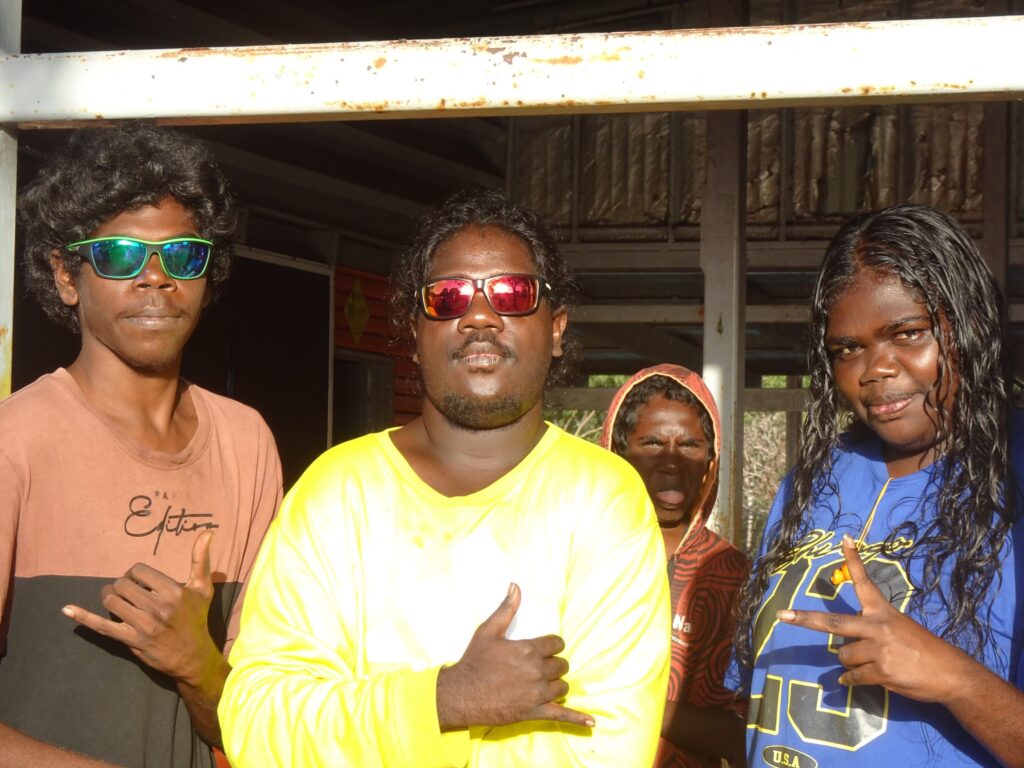
Improved hearing health for Aboriginal and Torres Strait Islander people is intrinsically linked to broader improvements in health, education, and social and economic outcomes.
Aboriginal and Torres Strait Islander children experience a disproportionately high burden of persistent middle ear infections such as otitis media and associated hearing loss – about 5 times higher than general Australian population.
This profoundly affects their adult life trajectories. It has life-long impacts on educational participation and outcomes and psycho-social development (including speech development) that bring a greater risk of a range of adult social problems.
Deafness Forum Australia is focussing on four activities to contribute to the Closing The Gap national strategy.
1. Advocating for Indigenous Partnerships in Hearing Health
Deafness Forum Australia recognises its role in supporting initiatives by advocating for and promoting programs that embody genuine and effective partnerships between Aboriginal and Torres Strait Islander peoples and hearing health professionals. These programs must leverage successful ear health programs where possible to avoid duplication and maximise resource use.
2. Roundtable on First Nations Ear Health
Deafness Forum Australia hosted a national Roundtable meeting with a select group of influential Indigenous stakeholders and key organisations such as the National Aboriginal Community Controlled Health Organisation, Winnunga Nimmityjah (Strong Health) Aboriginal Health and Community Services, and Kalwun Development Corporation QLD.
This collective initiative aimed to address the ear care and hearing health disparities in First Nations communities.
Prof Kelvin Kong AM, an eminent ear, nose, and throat surgeon, and ardent social advocate, facilitated the Roundtable.
During our Roundtable, Indigenous representatives told us about pivotal healthcare access and delivery aspects, focusing on the challenges. Key actions and ideas emerged. An official communique was created: Meeting Communique – Addressing Aboriginal and Torres Strait Islander Hearing Healthcare MAR-2024
To augment the communique, we prepared a report that aligns the Roundtable outcomes with Closing The Gap Agreement priorities and the Roadmap for Hearing Health: Aligning Strategies with National Priorities – Roundtable Indigenous Hearing Healthcare MAR-2024.
We offer this authoritative consensus on healthcare access and delivery as a resource for every organisation contributing to this domain.
3. Addressing the hearing health of Aboriginal and Torres Strait Islander Peoples in the criminal justice system
There is an urgent need to address the high rates of hearing loss among Aboriginal and Torres Strait Islander peoples in contact with the criminal justice system, with rates as high as 80-95% in some communities.
Our justice system remains ineffective in addressing this population’s complex needs and vulnerabilities. As well as the enormous economic burden to society and particularly First Nations communities, Australia’s commitments under the United Nations Convention on the Rights of Persons with Disabilities are currently being neglected, with Aboriginal and Torres Strait Islander peoples with hearing loss experiencing unlawful discrimination regularly.
Our report, first published in 2022 and updated in 2024, aims to provide evidence of the perpetual cycle that exists between childhood ear disease in Aboriginal and Torres Strait Islander peoples and how it impacts the disproportionally higher rates of incarceration for this population and makes recommendations accordingly.
Read our report, Hearing Health of Aboriginal and Torres Strait Islander Peoples in the criminal justice system APR 2024.
Background
Living in remote parts of Australia is a precursor for ear issues, particularly for Indigenous children, where conditions such as middle ear infection (otitis media) are prevalent. Among Aboriginal and Torres Strait Islander children, this infection rate is among the highest globally, significantly affecting those under two years old. Persistent infections like otitis media lead to hearing loss at a rate approximately five times higher than in the general Australian population. This health issue not only impacts immediate quality of life but profoundly influences long-term outcomes in education and social integration, potentially leading to adult challenges like underemployment and interactions with the criminal justice system.
The socio-political and behavioural determinants of health, such as housing, access to healthcare, nutrition, and hygiene, play critical roles in these health outcomes. Poor conditions that limit education, awareness of hearing health, and the ability to maintain hygienic environments are significant contributors to ear disease. Issues such as inadequate nutrition, insufficient running water, and exposure to tobacco smoke exacerbate the risk.
Government and Community Interventions
Recognising the challenges, interventions and strategies must be codesigned with Aboriginal communities and led by culturally safe health services. This approach fosters trust and also ensures that interventions are respectful and effective. Health and housing agencies need to collaborate to enhance living conditions that support health, with increased housing stock and reliable access to essential health hardware. This integration is vital in preventing ear diseases and ensuring effective treatment and ongoing support are available.
Health services should prioritise prevention, early identification and appropriate medical interventions. In communities with a high risk of otitis media and conductive hearing loss, standard practice should include routine checks of ear and hearing health for all young children visiting clinics.
Australian Government programs like the Hearing Services Program and its Community Service Obligation component, as well as outreach by not-for-profit organisations, must continue with bipartisan support. These initiatives are crucial in maintaining the momentum for change and ensuring that health services are equitable and effectively managed.
In the education sector, early detection and support can also play a transformative role. Early years centres and schools in high-risk communities should have systems in place to identify and support children with hearing impairments. This includes training for teachers to accommodate the learning needs of these students and improving classroom acoustics to aid their learning experience.
